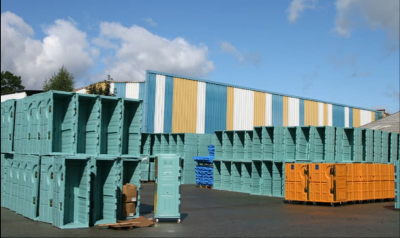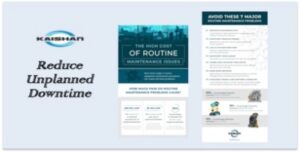Addressing the Difficulties of Logistics When Transporting Goods in the Americas (Guest Blog)

Every day, countless goods move across the Americas. Whether it’s massive cargo ships navigating the Atlantic or trucks transporting fresh produce between states, logistics remains a vital part of supporting trade in North, Central, and South America.
However, moving goods across the diverse landscapes of the Americas can present a number of challenges. Whether navigating customs and local regulations or dealing with varying infrastructure and road conditions, logistics professionals must be prepared to handle a wide range of hurdles and setbacks. (Photo: Canva)
Exploring the Land Transport Landscape in the Americas
The Americas have a diverse and often complex landscape, especially for land transport options. Because of this, understanding the terrain and infrastructure of each country is crucial for successful logistics operations.
North America
North America has sophisticated transportation systems across most of its countries. The U.S. stands out for its extensive network of roads and railways, facilitating efficient movement of goods across the country.
However, as urban populations grow, road congestion becomes an increasing concern for logistics businesses. Also, state-specific taxes and regulations can further complicate the seamless transportation of goods from one part of the country to the other.
Central and South America
The land transportation scenario in Central and South America is notably different. Many areas in Central America have limited modern public transportation. Roads, particularly in remote regions, are often left unkept and can be dangerous to travel on. The overarching issues here also include spotty regulations and limited major infrastructure investments.
On the other hand, countries like Argentina, Brazil, and Chile offer relatively sophisticated transport systems but grapple with unique issues such as ensuring road safety across challenging landscapes due to environmental concerns.
Major Challenges in Land Transportation across North, Central, and South America

The Persistent Issue of Aging and Inadequate Transport Systems
One major issue in transportation throughout the Americas is the condition of existing infrastructure. In the U.S., many transport systems, including roads, bridges, and railways, are showing signs of age and need upgrades or replacements. A consistent challenge in trying to secure adequate funding can vary wildly from one state to another. (Photo: Canva)
Navigating Through Complex Regulatory Frameworks
Navigating the regulatory requirements across the Americas can be challenging. In the U.S., bureaucratic tape can often slow down infrastructure development. Major projects might require 5-10 years just for comprehensive environmental assessments to be completed so work can begin.
Meanwhile, in Central and South America, lax regulations can result in safety concerns. The insufficient enforcement of traffic rules, for instance, is linked to high accident rates in certain nations. Moreover, potential investors might hesitate due to worries about corruption or the uncertainty of returns on investment.
Nevertheless, with a balanced blend of policies and technology advancements, these challenges can be addressed.
How Are These Challenges Being Addressed?
The complexities of land transportation in the Americas require innovative solutions that address current challenges and prepare for future uncertainties. Key strategies currently being adopted include implementing 4PL logistics models, using on-demand, short-term warehousing solutions, and relying on intermodal freight.
Embracing 4PL Logistics Models
In today’s economy, businesses are increasingly turning to fourth-party logistics (4PL) models. This approach offers a comprehensive solution that oversees the entire supply chain process, from procurement and storage to delivery. By outsourcing their logistics operations to specialized experts, companies can focus on other core parts of their business while ensuring cost-effective supply chain management.
The 4PL model is particularly beneficial in addressing infrastructure challenges. By leveraging the expertise of logistics providers, companies can navigate around infrastructural bottlenecks and make the most of existing transport networks. 4PL providers often have extensive networks of partners and suppliers, providing increased flexibility when dealing with demand fluctuations.
On-Demand, Short-Term Warehousing
In parts of the Americas, traditional warehousing methods with long leases might not be cost-effective or manageable. Short-term warehousing offers businesses the flexibility to adjust their storage requirements in line with current needs.
This flexible solution reduces the risk of product shortages and excess inventory and provides a buffer against unexpected disruptions in the supply chain.

Another important aspect of short-term warehousing is its on-demand nature. Companies can secure additional storage space quickly and easily, minimizing the impact of unforeseen changes in their supply chain. This is a great benefit for businesses dealing with seasonal fluctuations or major product launches that expect a surge in demand, but won’t sustain volumes long-term. Photo: Canva
Utilizing Intermodal Freight
Intermodal freight refers to the transportation of goods using multiple modes of transport (like trucks, trains, and ships). It’s another effective strategy for navigating the complex logistics landscape while reducing the costs associated.
By integrating different modes of transport, businesses can optimize their logistics operations based on various factors like cost and speed. For instance, rail transport can be used for long-distance hauls, while trucking companies are often used for the “last mile” delivery. This reduces dependence on any single mode of transportation.
Intermodal freight is also more environmentally friendly. It can significantly reduce carbon emissions by shifting part of the transport load to more energy-efficient modes like rail or water.
Looking Ahead
Looking ahead, the land transport landscape in North, Central, and South America is primed to shift considerably. Ongoing trends indicate a continued drive towards integrated and efficient logistics solutions.
4PL logistics, short-term warehousing, and intermodal freight are significant contributors to a well-round logistics strategy. As businesses increasingly seek efficiency and cost reductions, these solutions will gain more traction and become an integral part of how trade is managed across the Americas and the rest of the globe.
Author Bio:

Joe Jaska
Joe Jaska is the Head of Land Product for Region Americas at DB Schenker, a role he has held since early 2020. He has full P&L responsibilities for 24 countries in North, Central, and South America, leading land transport to ensure quick and reliable delivery to all major destinations across the continent. Joe ensures full or partial truckloads move across the continent or across borders without delay.






